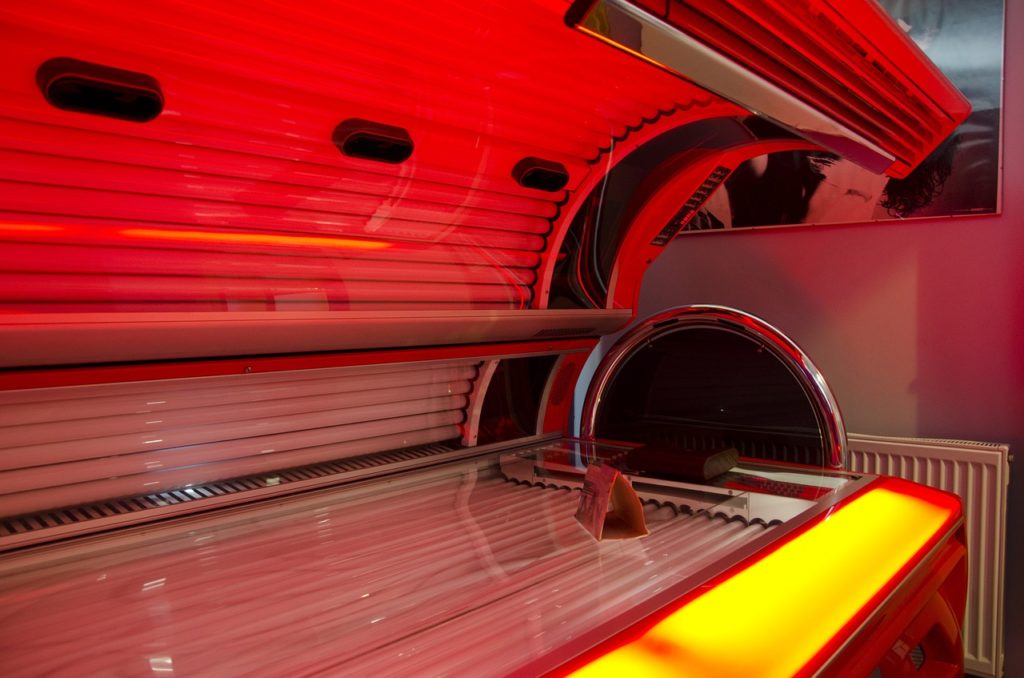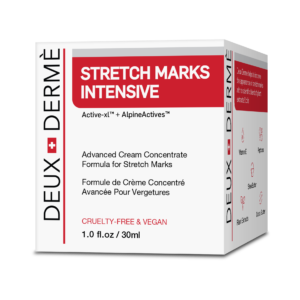Most people know that stretch marks commonly develop at times of quick body growth due to stretching of the skin. Women often get them on their stomachs during pregnancy, weightlifters commonly get them on their arms and legs when working out results in rapid muscle development, and young girls and boys get them when going through growth spurts during adolescence. Periods of extreme changes in body size frequently causes skin to stretch, tear, and leave behind stretch mark scars.
Skin tears and leaves stretch marks due to extreme growth, but it can also stretch and tear more easily if you have a lack of collagen in your skin. Collagen is a fiber found naturally in the body that provides skin its elasticity. When collagen levels in the skin are low, skin is less flexible and more likely to tear and scar. Sunlight damages collagen fibers, so spending time in the sun or tanning bed can increase your likelihood of developing stretch marks by damaging skin’s elasticity and making it more likely to tear during pregnancy or when gaining or losing weight.
To reduce the likelihood of tanning damaging your skin and increasing the likelihood of developing stretch marks, consider these methods of strengthening skin to prevent stretch mark scarring:
Wear Sun Block
You don’t have to wear SPF 100, but wearing some sun block when spending time outdoors will help protect your skin and reduce the likelihood that the sun will damage your collagen fibers. It is best to avoid tanning beds altogether—not even sunblock will keep the tanning bed from damaging your skin.
Drink Plenty of Water
Drinking plenty of water will keep your skin hydrated and supple and will reduce the likelihood that you will develop stretch marks. It is especially important to drink plenty of water when spending long periods of time outside in the sunshine due to the heat and humidity causing you to sweat and dehydrate.
Eat Collagen-Restoring Foods
Certain foods will encourage your body to restore depleted collagen more rapidly. In order to promote collagen restoration, eat foods rich in Vitamin C (oranges, red peppers, brussel sprouts, and broccoli), foods high in phytonutrients (cherries, blackberries, and raspberries), and foods high in amino acids (garlic, lean meats, and egg whites).
Use a Stretch Mark Prevention Product
Once you’ve developed stretch marks, they are very difficult to get rid of without having to undergo an expensive treatment. While some products are available that will reduce the appearance of stretch marks, chances are that stretch marks will never fully disappear. For that reason, preventing stretch marks before they appear is the best approach for living a life free from stretch marks.
Many effective products are available over the counter for preventing stretch mark development. Lotions and creams with ingredients proven to strengthen skin and promote elasticity can be applied at least once per day during times when stretch marks are likely to develop in order to discourage their development. To find a stretch mark prevention product that’s perfect for you, check out our catalog of stretch mark prevention creams and lotions.


